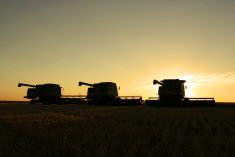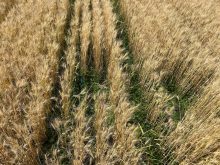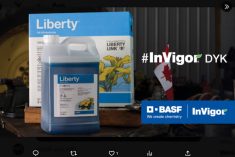Glacier FarmMedia — As of this writing it’s four and a half months until Canadian farmers will plant their next crop and at least eight months before the next harvest.
But as of the middle of December, potential profits from growing grains, oilseeds and pulses are looking grim in Western Canada.
“Costs have come down a little bit in 2025, but they’re still really high. And crop prices have gone down faster than our crop input (costs),” says Darren Bond, a farm management specialist with Manitoba Agriculture.
Read Also

Claas brings 1000 Series SP forage harvesters to Canada
In mid-August, Claas unveiled its new line of Jaguar forage harvesters at an event in Visalia, California, deep in the heart of that state’s dairy region.
“We’ve seen this before in farming, but I’m not sure we’ve seen it so quickly.”
Every year, farm management experts with the province assemble a cost of production guide for crops.
An early version of the guide was available at the Manitoba Agronomists’ Conference, held Dec. 11-12 in Winnipeg.
Bond went through some of the numbers while speaking at the conference. The estimates show profits will be elusive in 2025 — especially for farmers with higher land costs.
“We do (analyze) 16 crops. We only have one crop showing profit after it has been fully costed, which is pinto beans,” Bond says.
“Fully costed” means the operating costs of producing a crop, along with land, machinery and labour costs.
Operating costs have dropped compared to 2024, but the prices of inputs are still relatively high.
Bond warned growers about this “lag” scenario 12 months ago.
The lag is where prices per bushel for canola, wheat, oats, peas and other crops have declined, but inputs such as fertilizer haven’t dropped an equivalent amount.
During his talk, Bond pointed to a fertilizer affordability chart.
“How many bushels of grain does it cost to buy one ton of urea?… It’s come down off its highs, but it’s still relatively expensive,” he says.
“That’s not the bad one. Let’s look at phosphate… Considering how much these crop prices have come down, phosphate is super expensive.”
Less canola in 2025
Canola is a good crop to illustrate what farmers are facing in 2025.
Last year, the Manitoba cost of production guide had the following estimates:
- Operating costs for canola — $456 per acre
- Target price — $15.75 per bu.
In 2025, the guide says for canola:
- Operating costs —$418 per acre
- Target price — $13.25 per bu.
The price of canola has dropped by 16 per cent, but operating costs have only declined by eight per cent.
Then, there’s the matter of yield.
For much of the last 15 years, canola has paid the bills for western Canadian farmers.
However, canola yields are getting unpredictable, says Roy Arnott, who oversees the team of farm management specialists with Manitoba Agriculture.
“Canola is becoming less stable. You’ll have one farm that has 35-bushel canola and 50-bu. canola, on the same farm,” he says.
“That stability seems to be (fading) with canola, with challenging conditions. Short canola goes flat. Tall canola goes flat. It’s getting harder to manage canola to get those high yields.”
Given the economic and agronomic realities, some growers may switch to crops that require less fertilizer, have lower seed costs and are easier to manage. In other words: they’ll choose less risk.
“What are we going to do with canola acres in 2025? It’s really tough to know,” Bond says.
“I do see, based on my conversations with farmers, people are going to back off… the canola.”
However, such predictions have been made in the past. Prairie farmers have a history of growing canola, and a lot of it, despite the risks because the oilseed can be highly profitable.
Return on operating costs
Arnott and his team at Manitoba Agriculture have added some features to the 2025 cost of production guide for crops, such as estimates for return on operating costs.
“What are you getting out, for what you’re putting in?… That is new,” Arnott says, explaining it is profitability based solely on the operating costs of producing a crop, such as fertilizer, seed and crop insurance.
“If you look at something like oats, it’s sitting at a 58 per cent return on operating. Canola, right now, is sitting at 43 per cent. Inexpensive crops that still have profit potential are going to look better.”
With costs remaining high and crop prices relatively soft, it’s obvious farmers are in a different era than they were during the good times of 2021-23, Bond says.
“Economics do influence agronomic decisions. Things have changed… so we have to be aware of that,” he says.
“We have to be wise with our investments… I really think this year coming up… if we manage our fertilizer well, we can protect that yield. Protecting the yield is something that’s very important and something I’ll be speaking about this winter.”
















